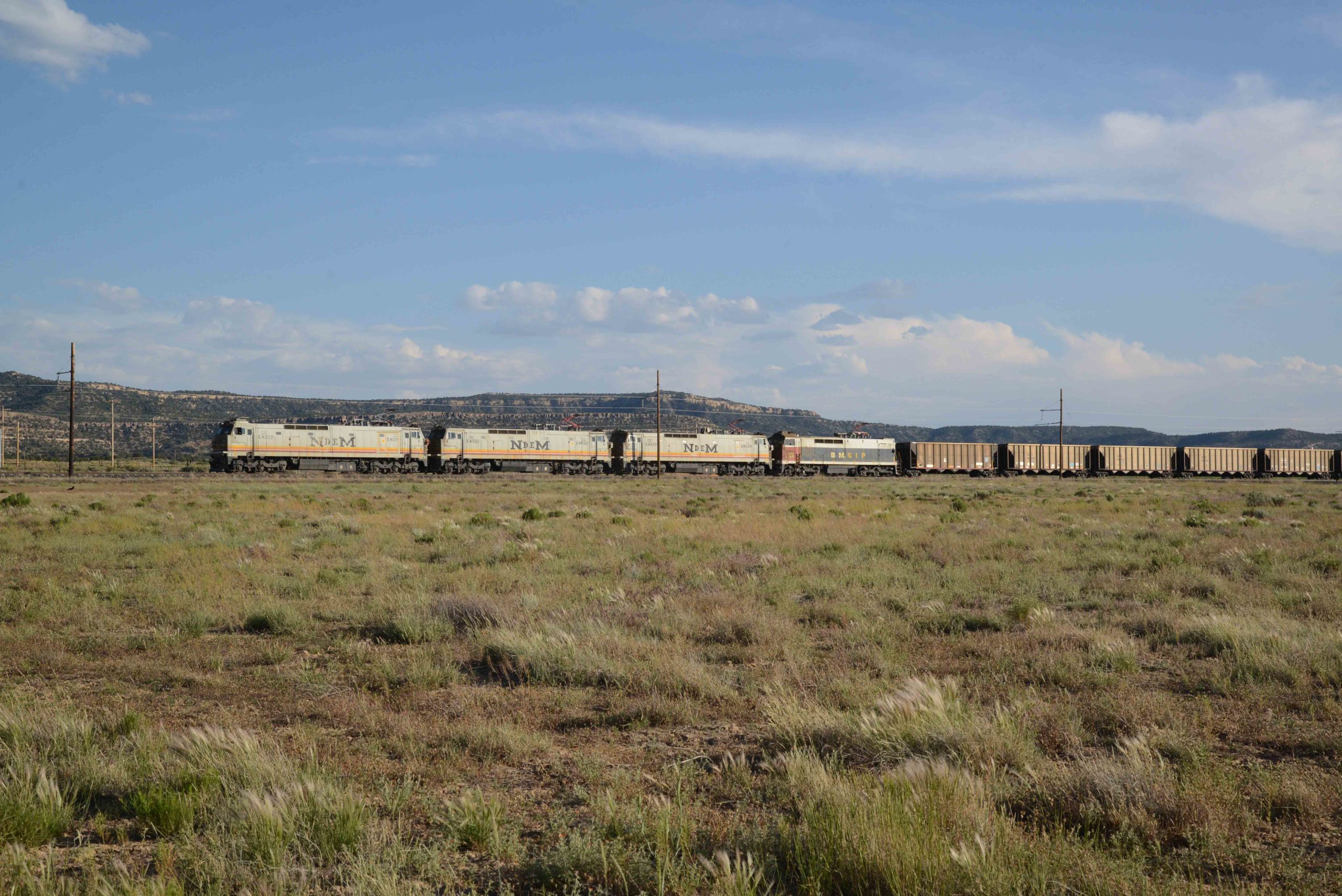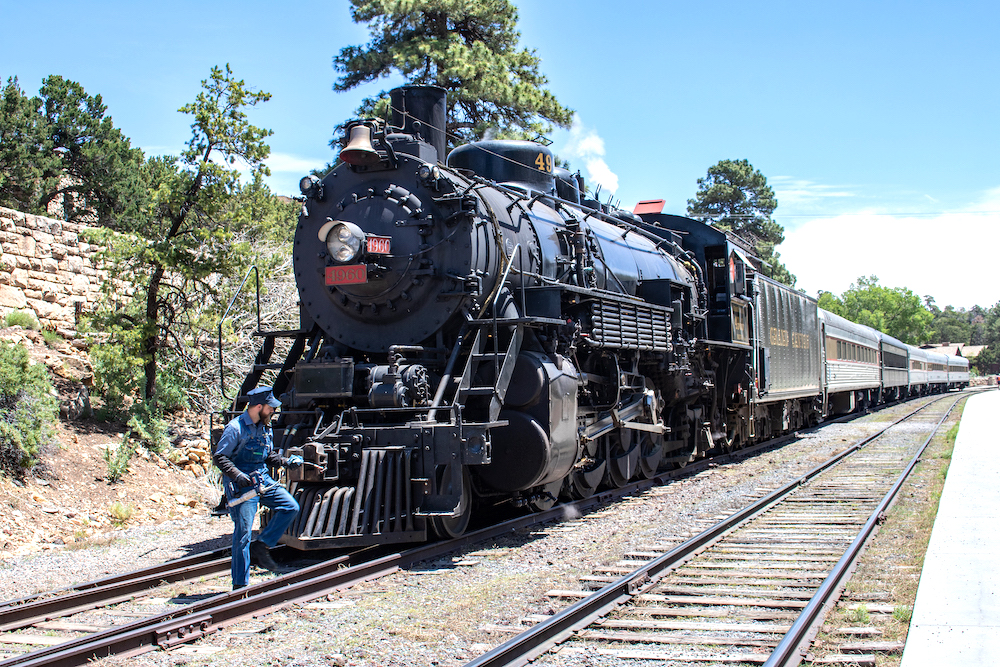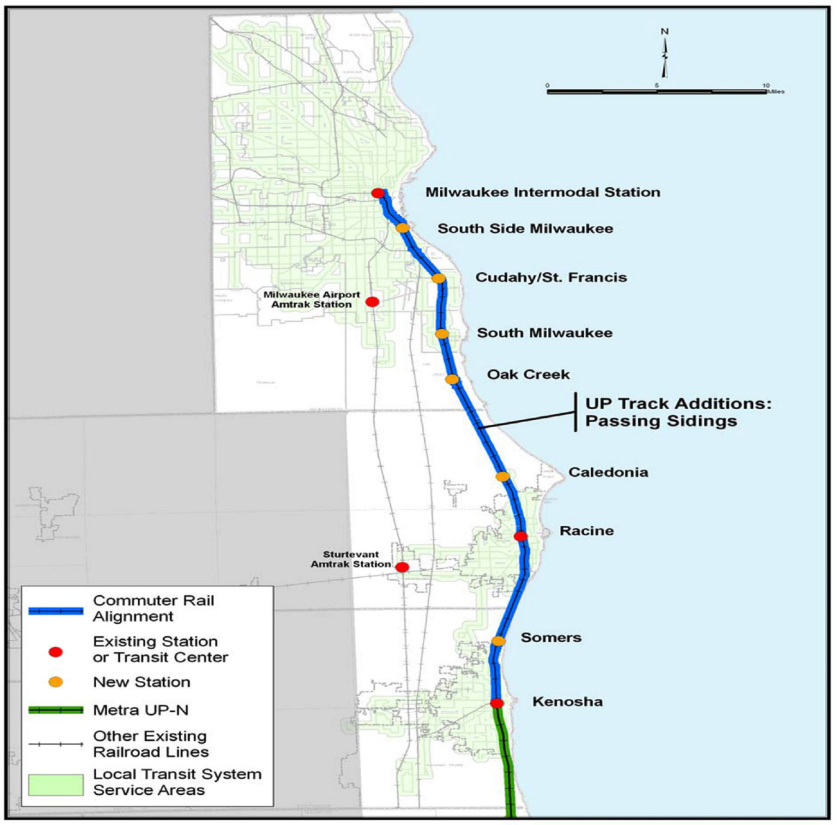PAGE, Ariz. — Efforts to save the Black Mesa & Lake Powell Railroad, the electrified captive railroad that runs 78 miles between mine and power plant in northeastern Arizona, have ended unsuccessfully.
Earlier this month, the Navajo Transitional Energy Co. said it would drop plans to buy the Peabody Energy’s Kayenta coal mine and the 2,250-megawatt Navajo Generating Station near Page. The decision came after a Navajo Tribal Council vote not to support the purchase proposal.
With the loss of the mine and power plant, there is no reason the Black Mesa & Lake Powell to operate. All three operations are expected to cease operation completely by the end of 2019, the victims of aging facilities, low natural gas prices, and ever-toughening emissions regulations for coal-burning power plants.
Although there have been half-hearted proposals by the Navajo Nation to maintain the railroad as a potential tourist operation, the line’s extraordinary remoteness and lack of outside rail connection likely doom it.
The railroad, long noted for its 1970s-built GE E60C locomotives (single-cab variants of the Amtrak E60CP electrics) and its later acquisition of Mexican E60s (purchased but never used by Nacionales de Mexico), was opened in 1974 at a cost of 55 million dollars, and was dubbed “America’s finest railroad” and most productive per mile in an October 1974 Trains article by David P. Morgan. The line was originally to feature fully automated operation, but later switched to manned operation. The railroad originally was projected to have an economic life of 35 years, which it has exceeded by ten years.
This closure will leave the 35-mile Deseret Power Railroad, formerly the Deseret Western Railroad, in Utah and Colorado, as the last standard-gauge electrified mine transport railroad in the U.S. An earlier railroad, the 20-mile Muskingum Electric Railroad in Ohio, opened in 1968 and closed in 2002.
One of the line’s original GE E60s, 6001, was moved to Williams, Ariz., in August 2010, where it is stored pending display at the future Arizona State Railroad Museum.















It’s sad to see the demise of this railroad. I had the opportunity to see it in operation in 2014. As far as it being too remote to operate as a tourist railroad, nothing is too remote for rail fans! Hope there’s a turnaround in the Navajo Nation’s current decision.
It was an interesting operation. When it was built they had to move the locomotives to the railroad by highway.
Coal is on the way out as a fuel source for generating electricity. This railroad is a transportation unit for a coal burning generating station. Without this traffic there is no reason for the railroad to exist. Sorry, folks – economics is a harsh mistress.
The above comments are general in nature and do not form the basis for an attorney/client relationship. They do not constitute legal advice. I am not your attorney. Find your own damn lawyer.
Interesting talk about it not being viable as a tourist line…considering you have to go on the highway that parallels it if you are going from the Grand Canyon to Monument Valley(yes, you can see some of Monument Valley without ever entering the park itself). I’m also sort of surprised the Navajo nation would give up the mine jobs that easily, since not only would they own the power plant but the mine that supplies it as well, but I guess they think they know better.